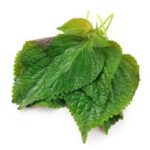How to Make Peking Duck: The Ultimate Guide to This Iconic Dish

Peking Duck is one of the most celebrated dishes in Chinese cuisine, known for its crispy skin, tender meat, and complex flavors. Originating from Beijing (formerly Peking), this dish has been a symbol of Chinese culinary tradition for centuries. The preparation of Peking Duck is a meticulous and artful process, combining techniques of roasting, glazing, and carving. This article will take you through the history of Peking Duck, its traditional preparation method, and provide a detailed, step-by-step guide on how to make Peking Duck at home.
The History of Peking Duck
Peking Duck has a rich history that dates back to the imperial kitchens of the Ming Dynasty (1368–1644). It was initially served exclusively to the emperor and his court, showcasing not only the finest culinary skills but also the country’s wealth and culture. The dish became famous for its perfectly roasted, golden-brown skin, which was crispy and delicate, a feature that distinguished it from other roasted ducks.
Over time, Peking Duck became accessible to common people, and by the Qing Dynasty (1644–1912), it had firmly established itself as a staple in Chinese cuisine. Today, the dish is enjoyed by millions worldwide and is a hallmark of Chinese cooking, often served during festive occasions and banquets.
Key Characteristics of Peking Duck
What sets Peking Duck apart from other duck dishes is its unique cooking method. The duck is traditionally air-dried for hours, sometimes even overnight, and then roasted in a special oven. The result is an incredibly crispy skin, which is the hallmark of this dish, with a tender and flavorful meat inside. Peking Duck is often served with thin pancakes, hoisin sauce, and thinly sliced vegetables like scallions and cucumbers, allowing the eater to assemble their own wrap-style bite.
The Traditional Preparation of Peking Duck
Preparing traditional Peking Duck involves several stages: from selecting the right duck, to air-drying, roasting, and serving. It is a time-intensive process that requires patience, skill, and attention to detail. The preparation also involves using a special oven or roasting method to achieve the desired texture and flavor.
1. Selecting the Right Duck
The foundation of a good Peking Duck lies in choosing the right duck. Traditionally, a special breed of duck known as the Beijing or Peking duck is used. These ducks are bred specifically for their size, meat quality, and skin texture. The ducks are usually raised to weigh between 2.5 and 3.5 kilograms to ensure an optimal balance between skin and meat. The best ducks for Peking Duck are tender, with a thick layer of fat beneath the skin, which helps achieve that crispy texture when roasted.
2. Air-Drying the Duck
One of the most important steps in preparing Peking Duck is air-drying the duck. After the duck has been slaughtered and cleaned, it is inflated with air to separate the skin from the meat. This helps the skin crisp up during roasting. The duck is then coated with a mixture of maltose syrup (or honey) and vinegar, which gives the skin its glossy appearance and contributes to its crispness. Once the duck is glazed, it is left to air-dry for several hours, often overnight, in a cool, dry place. This step is crucial to achieving the perfect crispy skin.
3. Roasting the Duck
The next step is roasting the duck. Traditionally, Peking Duck is roasted in a wood-fired oven, although modern versions often use electric or gas ovens. The duck is hung in the oven by a hook, allowing it to roast evenly on all sides. As the duck roasts, the fat melts away, leaving behind a crispy, golden skin. The ideal roasting time is about 60-90 minutes, depending on the size of the duck and the temperature of the oven. During roasting, the skin should turn golden brown and become crisp, while the meat remains tender and juicy.
4. Carving the Duck
Carving Peking Duck is an art form. Traditionally, the chef will carve the duck in front of the diners, ensuring that the crispy skin is served separately from the meat. The goal is to carve thin slices of skin and meat, which are then placed on a plate for serving. The crispy skin is considered the most prized part of the dish, and it is typically served first, either on its own or with a small amount of meat.
5. Serving the Peking Duck
Peking Duck is traditionally served with thin pancakes, hoisin sauce, and sliced vegetables, such as cucumber and scallions. The pancakes are soft, slightly chewy, and serve as a vessel to wrap the crispy duck skin and meat, along with a bit of sauce and vegetables. To assemble, place a slice of duck and some crispy skin on a pancake, add a dab of hoisin sauce, and top with the vegetables. Roll it up like a wrap, and enjoy!
How to Make Peking Duck at Home: A Step-by-Step Guide
While traditional Peking Duck requires specialized equipment and a significant amount of time, it is possible to replicate the dish at home with a few adjustments to the method. Here’s how to make Peking Duck in your own kitchen:
Ingredients:
- 1 whole duck (about 2.5-3.5 kg)
- 2 tablespoons maltose syrup or honey
- 1 tablespoon vinegar (rice vinegar or white vinegar)
- 1 tablespoon soy sauce
- 1 tablespoon Chinese five-spice powder
- 1 tablespoon sesame oil
- 1 cucumber, julienned
- 3-4 scallions, julienned
- Hoisin sauce
- Chinese pancakes (store-bought or homemade)
Instructions:
1. Prepare the Duck:
- Begin by cleaning the duck and removing any feathers. Trim excess fat, but leave the skin intact.
- Rinse the duck under cold water and pat it dry with paper towels.
- Use a small skewer or sharp knife to prick the skin all over (but not the meat) to allow the fat to render out during roasting.
2. Air-Dry the Duck:
- In a small bowl, combine the maltose syrup (or honey) and vinegar. Heat the mixture slightly to thin it out if necessary.
- Brush the entire duck, including the skin, with this syrup and vinegar mixture.
- Hang the duck in a cool, dry place or in the fridge for at least 6-8 hours, or preferably overnight, to dry out the skin.
3. Prepare the Oven:
- Preheat your oven to 190°C (375°F).
- Place a roasting rack on a baking sheet to catch any drippings.
4. Roast the Duck:
- Once the duck is dry, rub it with a mixture of soy sauce, five-spice powder, and sesame oil. This will add flavor to the meat.
- Place the duck on the roasting rack, breast-side up. Roast for 60-90 minutes, depending on the size of the duck. You can baste the duck occasionally with the rendered fat to help it brown evenly.
- During the last 10 minutes of roasting, increase the heat to 220°C (430°F) to achieve the crispy skin.
5. Carve the Duck:
- Once the duck is roasted to a golden brown and the skin is crispy, carefully remove it from the oven.
- Let it rest for a few minutes before carving. Use a sharp knife to slice the duck into thin pieces, starting with the skin and then cutting the meat.
6. Serve:
- Place the sliced duck on a serving platter along with the julienned cucumber and scallions.
- Serve with hoisin sauce and Chinese pancakes. To assemble, spread a small amount of hoisin sauce on a pancake, add a slice of duck and some crispy skin, then top with cucumber and scallions. Roll up the pancake and enjoy!
Tips for Perfect Peking Duck
- Drying is key: The longer the duck can dry, the crispier the skin will be. If you can, let it dry overnight.
- Roasting method: If you don’t have a traditional roasting oven, a regular oven will work just fine. Just be sure to keep the duck elevated on a rack to allow the fat to drip away.
- Basting: While the duck is roasting, you can baste it with its own fat to help it achieve an even, crispy skin.
- Serving: Serve the duck immediately after carving to ensure that the skin stays crispy. You can also prepare the pancakes ahead of time, either by purchasing them or making them at home.
Conclusion
Peking Duck is a truly iconic dish that has a long-standing tradition in Chinese culinary culture. Although making Peking Duck at home requires patience and some special techniques, the results are well worth the effort. The crispy skin, tender meat, and flavorful toppings create a perfect harmony of taste and texture. Whether you’re preparing it for a special occasion or simply want to try your hand at one of the most revered dishes in Chinese cuisine, this step-by-step guide will help you create an authentic and delicious Peking Duck right in your own kitchen.

